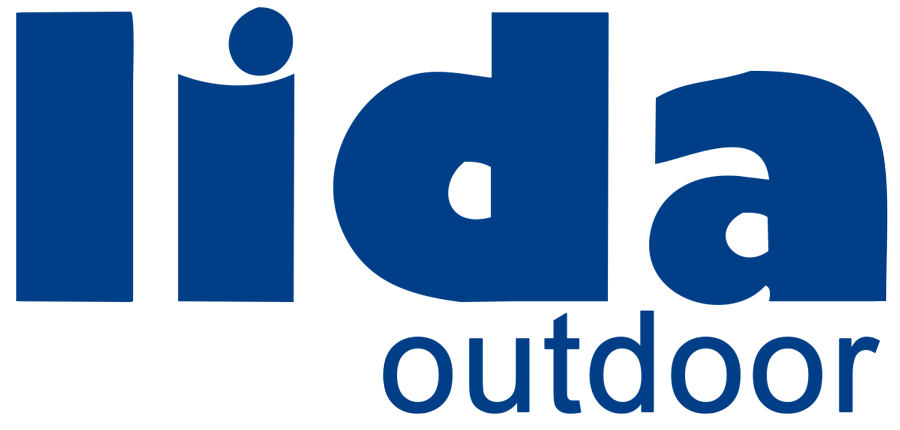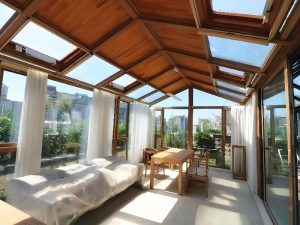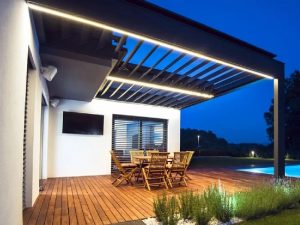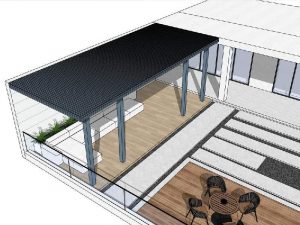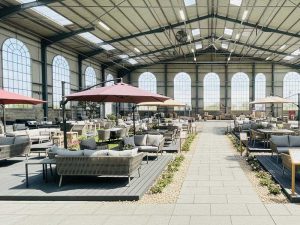In recent years, there’s been a clear shift toward higher-quality outdoor spaces, whether it’s for family gatherings, business events, or upscale garden projects. With this change comes a real demand for structures that can withstand strong winds and heavy rain, and that remain rock-solid for years to come. Flimsy, temporary gazebos that collapse easily or need new covers every season just don’t cut it anymore. More and more people are looking for something truly reliable, like the permanent gazebo we’re introducing in this article.
Don’t Miss: How Much Wind Can a Gazebo Withstand?
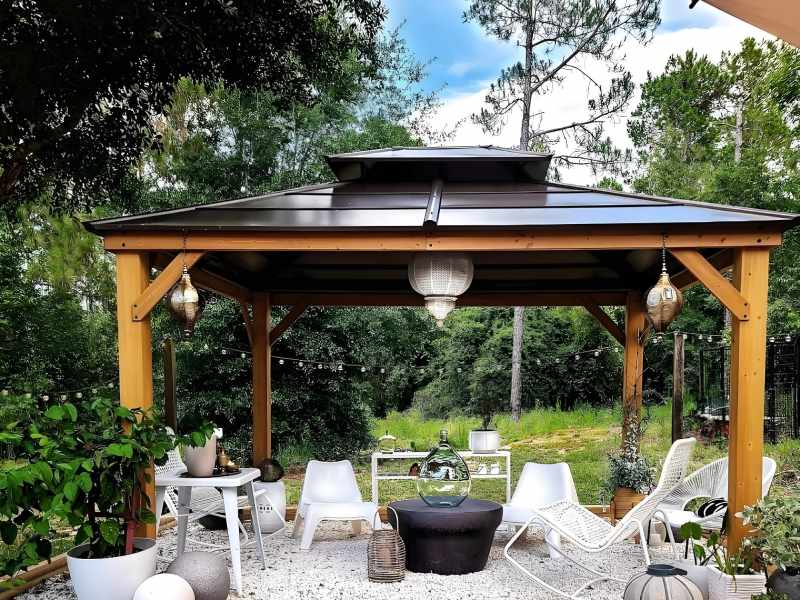
As a brand with over 20 years of experience supplying metal gazebos to customers worldwide, we understand the challenges that both everyday buyers and bulk purchasers face when choosing a permanent gazebo. That’s why in this guide, we’ll walk you through the key factors, practical tips, and insider advice you need to make the right choice, whether you’re planning a backyard upgrade or sourcing for a large project.
What Is a Permanent Gazebo? Four Key Advantages
Before we dive into the features of permanent gazebos and what to watch for when purchasing one, let’s start with the basics—what exactly is a permanent gazebo, and why has it become the go-to choice for so many outdoor projects?
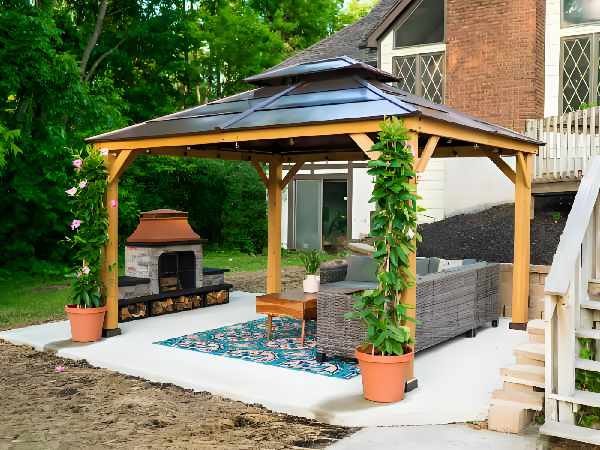
A permanent gazebo is a fixed outdoor structure built for long-term use—unlike portable or foldable options, it features a solid frame and a weather-resistant roof that keeps it firmly in place in gardens, patios, commercial venues, or public spaces, no matter the weather. The biggest advantage is stability: whether you choose aluminum, galvanized steel, or reinforced wood, the goal is long-lasting strength and dependable protection from wind and rain. At the same time, permanent gazebos offer stylish looks and flexible options to fit everything from cozy family backyards to large-scale commercial settings.
The Four Core Advantages of Permanent Gazebos:
1. Year-Round Wind and Rain Protection: Most permanent gazebos use a hardtop design—typically galvanized steel or polycarbonate panels—that offers excellent drainage and high strength. With sturdy frames and ground anchors, they stay rock-solid even in harsh weather, making true year-round use possible.
2. Premium Look, Landscape Centerpiece: With upgraded materials and design, these gazebos often become the visual highlight of a backyard or commercial space. Whether it’s a private garden, poolside, outdoor café, or public plaza, a permanent gazebo is both practical and beautiful.
3. Long Lifespan, Minimal Maintenance: Thanks to their hard structure, permanent gazebos only need basic maintenance for long-term use. Aluminum and steel frames rarely warp and typically last over ten years with low upkeep.
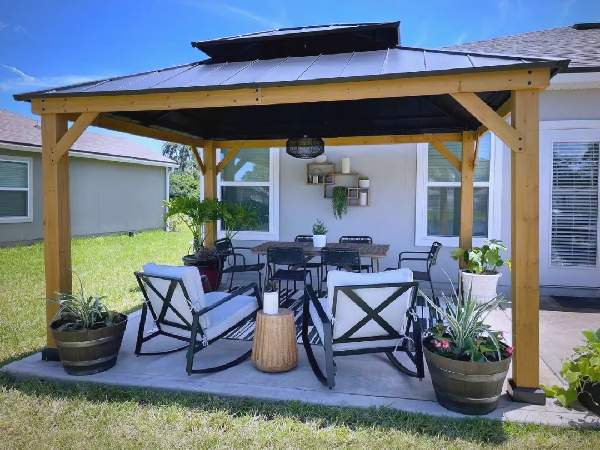
4. Flexible Setup, Expandable Features: You can add mosquito nets, curtains, or sliding side panels—or install extras like lighting, power, or anti-slip flooring. A well-designed permanent gazebo is almost like a semi-open outdoor room: one smart investment brings peace of mind for years to come.
In short, if you need an outdoor structure that’s built to last, easy to secure, and truly reliable, then a permanent gazebo is your go-to, one-time solution.
Permanent Gazebo Feature #1: Frame Material and Structure
When it comes to long-term outdoor use, looks aren’t everything. What really matters is whether the gazebo’s frame can withstand time, wind, and weather. The key to a permanent gazebo’s reliability is its stronger, more weather-resistant structure. Today’s most popular materials include aluminum alloy, galvanized steel, and solid wood.
Here’s how they compare:
| Property / Material | Aluminum Alloy | Galvanized Steel | Solid Wood |
| Corrosion Resistance | Excellent | Inland use | Low |
| Structural Strength | Strong | Very Strong | Moderate |
| Maintenance Frequency | Low | Moderate | High |
| Initial Cost | Medium | Medium-Low | High |
| Long-Term Cost | Low | Medium | High |
| Recommended Use Cases | Ideal for home use and small businesses | Suitable for large fixed installations | Best for upscale gardens and private landscaping |
1. Aluminum Alloy
Aluminum alloy stands out in outdoor use thanks to its excellent resistance to rust and corrosion. It’s lightweight, structurally stable, and easier to transport and install, making it perfect for backyard setups, light commercial areas, and small-scale projects. Although its price per unit is slightly higher than regular steel, aluminum offers major advantages in installation ease and long-term maintenance. To ensure stability, LIDA OUTDOOR recommends using anchor bolts or thicker aluminum profiles to boost wind resistance and overall durability.
2. Galvanized Steel
Compared to aluminum, galvanized steel offers superior compression strength and wind resistance, making it ideal for locations with strong winds or heavy structural loads. Its impressive strength makes it a top choice for municipal projects, commercial outdoor spaces, and park walkways—especially when building large-scale permanent gazebos.
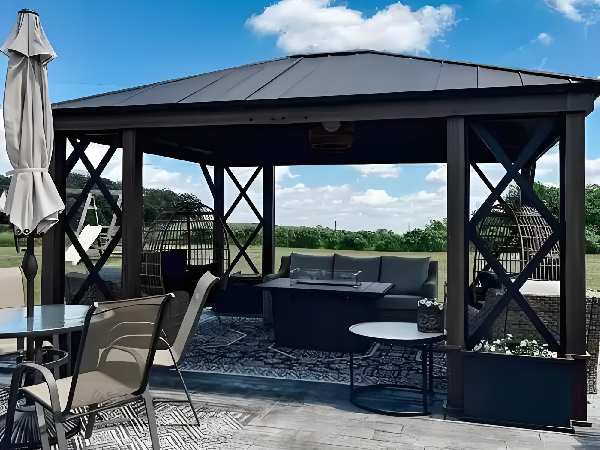
In dry or inland regions, standard hot-dip galvanization and powder coatings are usually enough to prevent corrosion. However, in coastal or high-salinity environments, regular galvanized steel may rust more quickly. In these cases, it’s best to upgrade to heavy-duty anti-corrosion coatings or switch to stainless steel. While this increases the initial cost, it greatly improves long-term durability. That’s why galvanized steel is often the go-to material for professional buyers handling bulk projects.
3. Wood Structure
For those who value a natural look and seamless garden aesthetics, solid wood gazebos offer a timeless charm that metal can’t replicate. Treated cedar, red pine, and redwood are commonly used for high-end backyard setups and are especially popular in Western markets.
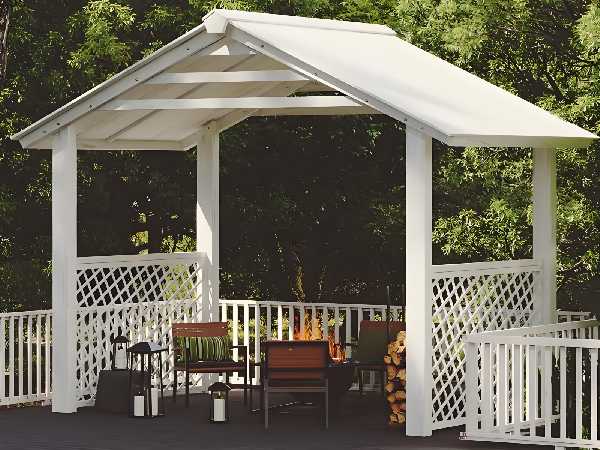
That said, wood naturally absorbs moisture, can crack or warp, and is prone to insect damage. Regular painting and cleaning are required to maintain its appearance and performance. Wood also lacks the strength of metal, making it unsuitable for windy areas or wide-span structures. With its higher material cost, complex installation, and frequent maintenance needs, solid wood is best suited for customers with generous budgets who prioritize beauty and craftsmanship.
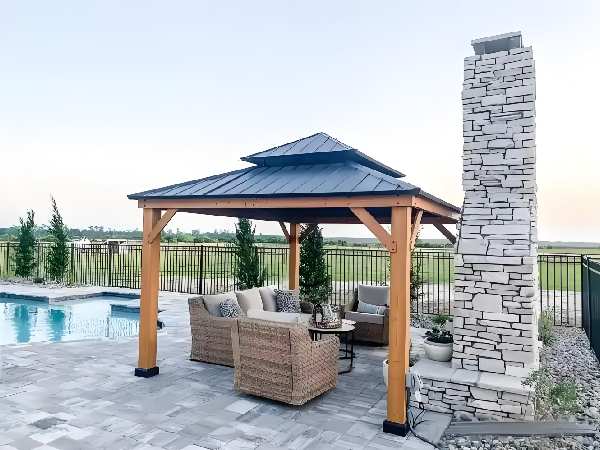
Permanent Gazebo Feature #2: Roof and Sidewall Systems
Even with a sturdy frame, a gazebo can still fall short if the roof and sidewalls aren’t up to standard. A truly functional permanent gazebo depends on two essentials: a roof that blocks sun and rain while withstanding wind and UV, and sidewalls that offer insect protection, weather control, and flexible privacy.
1. Three Common Roof Materials
Most permanent gazebos on the market today use one of three roof types: galvanized steel panels, polycarbonate (PC) sheets, or coated fabric (polyester with PU or PA coating). To know more gazebo roof types, check out this link >>
Galvanized Steel Roofs are the most durable and structurally stable, with excellent wind resistance. They’re ideal for year-round use and for locations exposed to harsh weather, making them the most popular hardtop option.
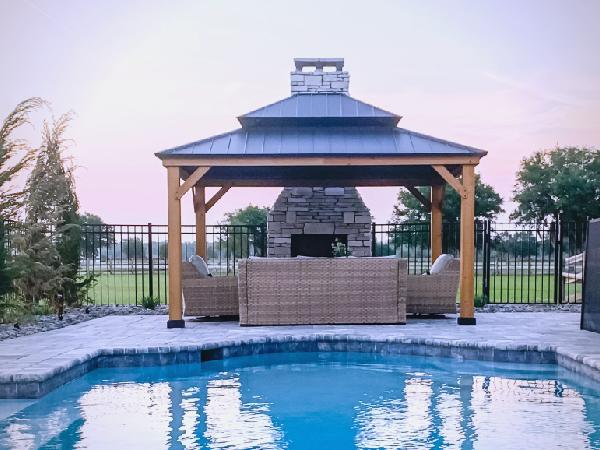
Polycarbonate (PC) Roofs strike a balance between light transmission and heat insulation. They’re highly impact-resistant and offer strong UV protection. With their modern, sleek appearance, PC roofs are perfect for stylish gardens or commercial outdoor spaces.
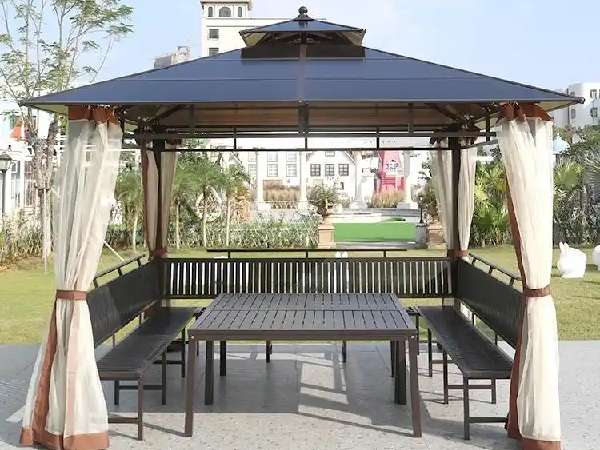
Coated Fabric Roofs are budget-friendly and easy to transport, but they fall short in weather resistance and long-term stability. Many entry-level gazebos on e-commerce platforms still use fabric tops, which may be suitable for temporary or low-budget setups. However, if you’re building a true permanent gazebo, LIDA OUTDOOR recommends upgrading to a hardtop roof to avoid the hidden costs of frequent replacements.
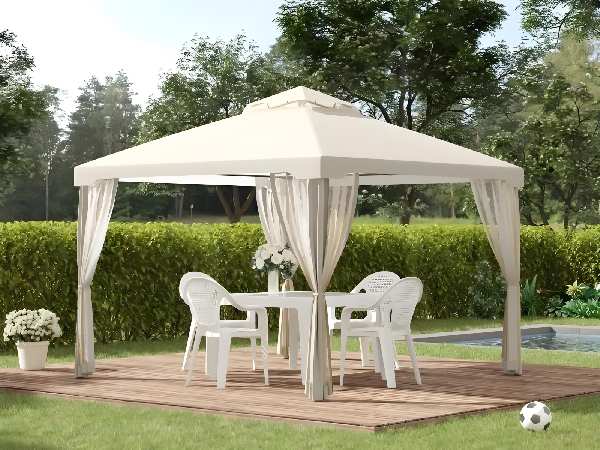
2. Three Common Sidewall Systems
While the roof protects against the elements, it’s the sidewalls that define how comfortable the space really is. Most permanent gazebos offer three main sidewall options: mosquito netting, fabric curtains, and hard side panels. These help block insects, provide shade and wind protection, and offer adjustable levels of privacy, from semi-open to fully enclosed.
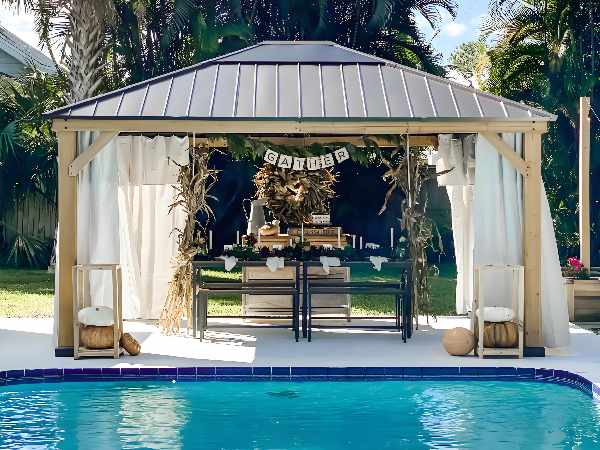
In commercial settings like outdoor dining areas, cafés, or poolside lounges, sidewalls also shape the atmosphere and overall user experience. Hard side panels, in particular, often use sliding tracks for smooth operation. They boost the structure’s visual appeal and provide year-round usability, significantly increasing both durability and commercial value.

Many modern permanent gazebos now support a dual-track system with both netting and curtains, giving users flexibility to adapt to the weather. Higher-end models even offer quick-release or swappable panels for easier cleaning and better adaptability.
Factors to Consider When Buying Permanent Gazebos in Bulk
Whether you’re managing an engineering project, running an e-commerce platform, or sourcing for a brand, choosing a reliable permanent gazebo manufacturer goes far beyond just comparing photos and price tags. What truly matters is whether the factory can deliver on quality, schedule, and collaboration.
A trustworthy manufacturer should demonstrate these essential capabilities:
- Structural Design Capability: Can they provide structural drawings, load analysis, and wind/snow load test data? Do they have real-world project experience?
- Complete Certifications: Do they hold general certifications like ISO, CE, or REACH? Can they offer compliance documents tailored to your country or project?
- Proven Product Performance: Do they have lab test reports for wind and snow resistance? Are the structural components up to standard?
- Complete Installation Support: Are manuals, diagrams, and how-to videos included? Is remote technical guidance available?
- Professional Packaging & Shipping: Is the packaging compact and logistics-friendly? Are there protections in place to prevent damage?
- High Product Standardization: Are SKUs, accessories, and dimensions consistent? Do they offer content kits, install guides, and product descriptions ready for listing?
- Responsive After-Sales Service: Can they quickly send replacement parts? Are return/exchange policies flexible?
- Strong Customization Capability: Do they support logo printing, color options, or structural customization? Is the sampling process clear?
- Stable Production & Lead Time: Can they deliver on time during peak seasons? Do they offer stock flexibility?
- Clear Business Process: Is the pricing model standardized? Can they smoothly handle the full cycle, from sample to order to delivery?
- Export & Customs Expertise: Do they have experience shipping to multiple countries? Do they understand customs clearance and export documentation?
Which Capabilities Matter Most—Based on Your Business Type
- Engineering Contractors: Focus on Points 1–4 to ensure structural safety, professional design, and smooth project execution.
- E-commerce / Retail Wholesalers: Prioritize Points 5–7 to guarantee compliant packaging, easy installation, and responsive after-sales service.
- Brand Owners / Distributors: Pay close attention to Points 8–11 to ensure flexible customization, stable production, seamless cooperation, and smooth international shipping.
Conclusion
Compared to other types of gazebos, permanent gazebos come at a higher upfront cost, and once installed, they’ll shape your outdoor space for years to come. That’s why every decision—from materials to manufacturer—requires careful thought. For bulk buyers, the stakes are even higher. You need reliable performance, consistent quality, and a partner who understands large-scale delivery and long-term value.
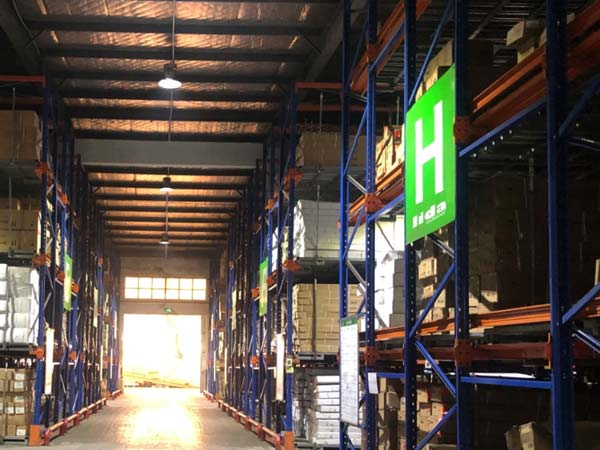
If you’re sourcing a dependable supplier of permanent gazebos in China, LIDA OUTDOOR is ready to support you. With 20+ years of experience in outdoor manufacturing, we offer OEM/ODM customization, large-volume production, and export compliance for various regions. Located near major ports, we ensure fast shipping and stable delivery timelines.
Get in touch today for samples, catalogs, or a custom wholesale quote >>
